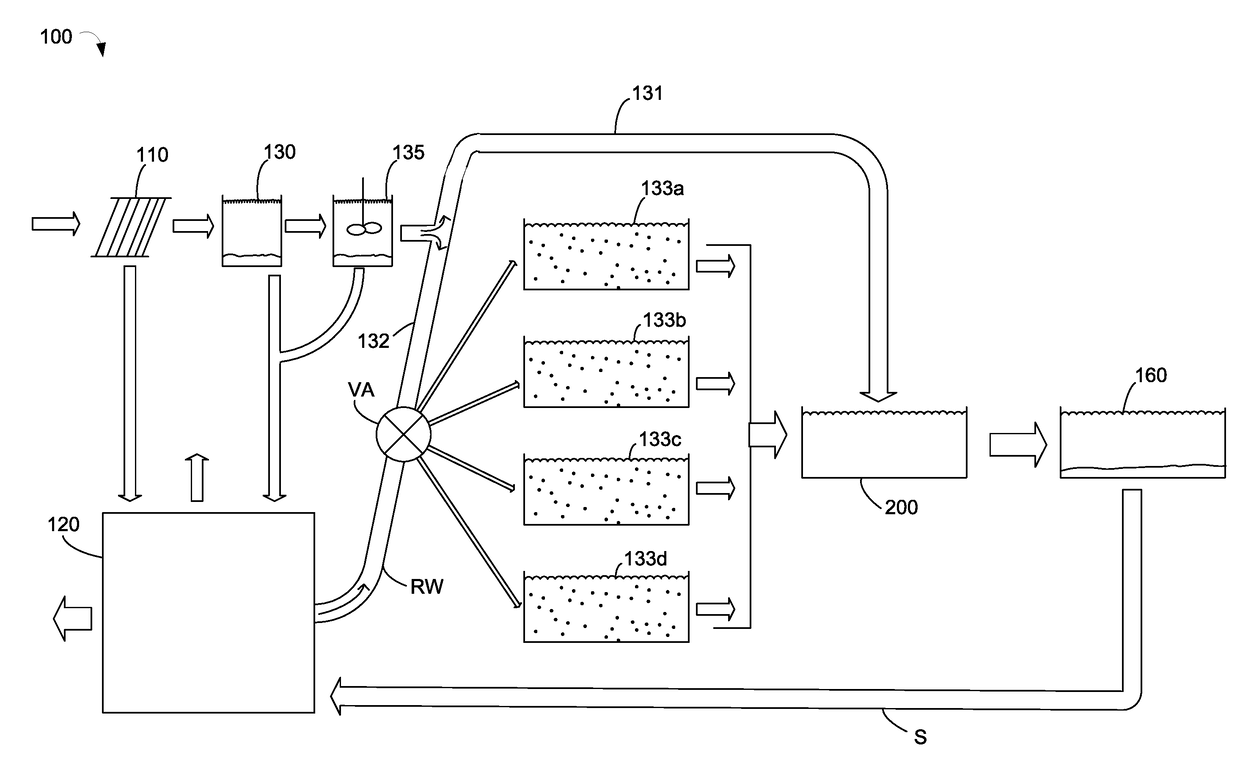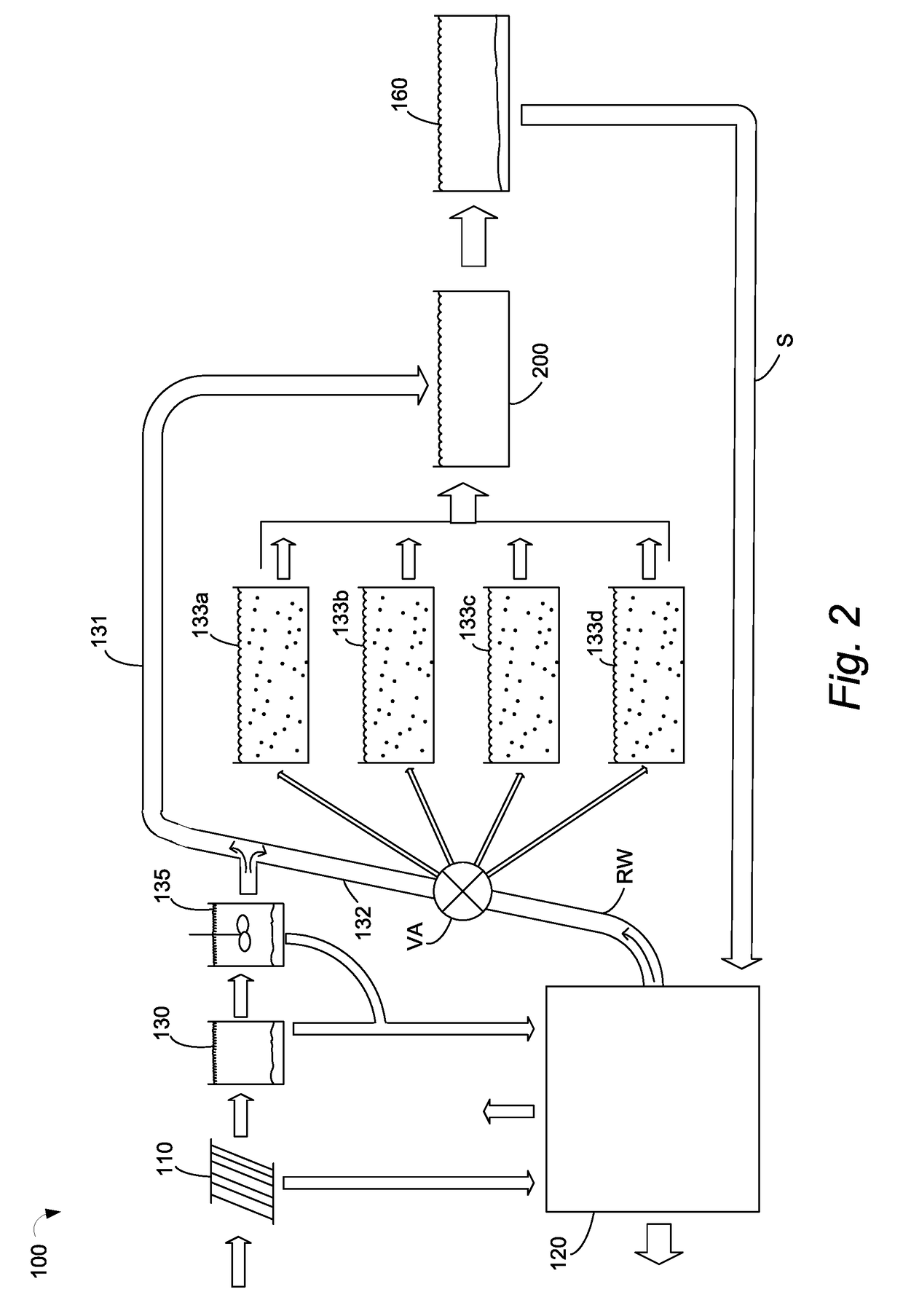Anammox process at waste water plant
a waste water plant and anammox technology, applied in the direction of biological water/sewage treatment, multi-stage treatment of water treatment, biological sludge treatment, etc., can solve the problems of inability to stabilize nitrite without forming nitrate, limited application of sharon process, energy and resource consumption of denitrification, etc., to achieve easy suppression of nitrite growth
- Summary
- Abstract
- Description
- Claims
- Application Information
AI Technical Summary
Benefits of technology
Problems solved by technology
Method used
Image
Examples
Embodiment Construction
[0036]The present invention is primarily directed to purification of municipal wastewater. Such wastewater contains a variety of contaminants, e.g. nitrogen compounds (mainly in the form of ammonium salts), phosphorous compounds and different kinds of carbon compounds.
[0037]In FIG. 1, a schematic view of an exemplary prior art wastewater treatment plant 100 is shown. It should be understood that a prior art plant not necessarily will comprise all the shown components and process steps. It could also comprise more steps and processes than the ones shown.
[0038]In a first step 110, the wastewater will be sieved, in order to remove large particles and other debris. The size of the sieve openings may vary significantly. If small sieve openings are used, a substantial portion of the compounds containing carbon will be trapped in the sieve. The particles trapped in the sieve may be transported to a digester 120, in which the particles will digest anaerobically to form e.g. methane. However...
PUM
 Login to View More
Login to View More Abstract
Description
Claims
Application Information
 Login to View More
Login to View More - R&D
- Intellectual Property
- Life Sciences
- Materials
- Tech Scout
- Unparalleled Data Quality
- Higher Quality Content
- 60% Fewer Hallucinations
Browse by: Latest US Patents, China's latest patents, Technical Efficacy Thesaurus, Application Domain, Technology Topic, Popular Technical Reports.
© 2025 PatSnap. All rights reserved.Legal|Privacy policy|Modern Slavery Act Transparency Statement|Sitemap|About US| Contact US: help@patsnap.com



